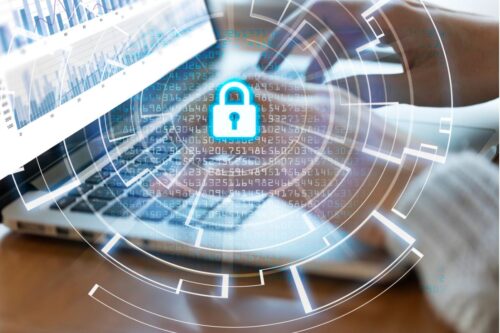Cybersecurity 101 Categories
In the realm of cybersecurity, safeguarding your network against potential threats is paramount. One of the fundamental measures in ensuring the security of your home or business wireless network is through the use of a WPA2 password. This electronic key acts as a barrier, allowing only authorized computers and devices to connect to your WiFi network. In this blog post, we delve into the significance of WPA2 password security and how it serves as your first line of defense against network threats.
What is a WPA2 Password?
A WPA2 password represents the crux of modern cybersecurity protocols, a cornerstone in the architecture of wireless network security. This terminology might seem technical, but at its essence, it denotes a security measure deployed across wireless networks to ensure that access is strictly reserved for authorized devices and users. In a digital age where the specter of cyber threats looms large, understanding and implementing a WPA2 password transcends basic protocol -it’s a critical safeguard.
Wi-Fi Protected Access version 2 (WPA2) is the evolution of its predecessor, WPA, refined and enhanced to counteract the sophisticated tactics employed by cyber adversaries. It stands as a testament to the cybersecurity community’s commitment to fortifying digital defenses against the constantly evolving landscape of threats. The essence of WPA2 lies in its ability to encrypt data transmitted over the wireless network, thereby preserving the confidentiality and integrity of the information flowing through it. This encryption mechanism is pivotal, acting as a bulwark against unauthorized interception and access, ensuring that sensitive data remains under the aegis of its intended custodians.
The significance of a WPA2 password extends beyond its technical capabilities; it embodies a proactive approach to cybersecurity. In deploying WPA2, organizations and individuals alike erect a formidable barrier, a first line of defense that actively protects against the infiltration of unauthorized devices. This barrier is not merely a deterrent but a sophisticated encryption tool that secures every packet of data, safeguarding the lifelines of communication that are integral to the functioning of contemporary society.
For network administrators and engineers grappling with the myriad challenges posed by network security management, adopting WPA2 represents a strategic decision. It’s a commitment to leveraging advanced encryption standards and authentication protocols that stand as the vanguard of digital protection. In the realm of network security, where visibility and control are paramount, WPA2 serves as a critical component in a comprehensive security strategy, enabling professionals to navigate the complexities of protecting network integrity with confidence.
In essence, a WPA2 password is more than a mere sequence of characters. It is a manifestation of the cybersecurity industry’s resilience, a symbol of the relentless pursuit of security in a world where digital threats are ever-present. As the fabric of digital connectivity continues to expand, embracing WPA2 is not just advisable-it’s imperative.
What is WPA2 in security?
WPA2 stands as a beacon of resilience in the battle against cyber threats, marking a significant advancement over its predecessor, WPA, with its superior encryption and authentication mechanisms. This protocol is the embodiment of a steadfast commitment to cybersecurity, designed meticulously to counteract the increasingly sophisticated strategies employed by cyber adversaries. By integrating WPA2 into network infrastructures, administrators are empowered to significantly reduce the risk of unauthorized access and ensure the sanctity of network communications remains inviolate.
This fortified protocol champions a dual-pronged approach to security. Firstly, it introduces an enhanced method of encryption, AES (Advanced Encryption Standard), which provides a formidable layer of protection for data traversing the wireless network. AES is renowned for its complexity and resilience, making it an arduous task for intruders to decrypt intercepted data. Secondly, WPA2 enhances the authentication process through the introduction of the 802.1X standard, which ensures that only devices and users with verified credentials can gain access to the network. This rigorous authentication process is pivotal in mitigating potential breaches and maintaining the integrity of network operations.
At its core, WPA2 transcends mere technical specifications; it represents a paradigm shift in network security philosophy. In an era where digital threats are perpetually evolving, the adoption of WPA2 signifies a proactive stance against these threats. It acknowledges the reality that in the digital domain, complacency equates to vulnerability. Thus, WPA2 is not just a security protocol; it is a strategic asset in the cybersecurity arsenal, offering a higher echelon of protection that is indispensable in safeguarding sensitive information.
Implementing WPA2 is a testament to an organization’s dedication to upholding the highest standards of cybersecurity. It reflects an understanding that in the digital age, the protection of data and the maintenance of privacy are paramount. For network administrators, the decision to embrace WPA2 is synonymous with embracing visionary leadership in the quest to navigate and surmount the challenges posed by an ever-changing threat landscape.
In summation, WPA2 is the cornerstone of modern network security strategies, a critical defense mechanism that bolsters the security posture of wireless networks against the myriad of cyber threats that besiege the digital world. Its implementation is not merely an operational necessity but a strategic imperative for those who seek to fortify their digital domains against unauthorized intrusion and eavesdropping.
Where do I find my WPA2 password?
Uncovering the location of your WPA2 password is akin to discovering the linchpin that secures the fortress of your wireless network. This pivotal piece of information, often overlooked in the grand scheme of network security, is your gateway to maintaining a fortified and impenetrable digital domain. The journey to locate your WPA2 password begins with understanding the architecture of your network infrastructure and the devices that comprise it. For the majority of home and small business networks, the WPA2 password is typically found within the confines of the wireless router or gateway. This device, which acts as the heart of your wireless network, is the custodian of your network’s security settings, including the WPA2 password. To access this information, one must navigate to the router’s administrative console, a digital dashboard that offers comprehensive control over the network’s security protocols and configurations. This console is accessible through a web browser, requiring the input of the router’s IP address-a sequence of numbers that serves as the gateway to the router’s inner sanctum. Upon gaining entry to the router’s administrative console, you will encounter a myriad of settings and options, each serving a unique function in the orchestration of your network’s security symphony. The path to the WPA2 password lies within the ‘Wireless’ or ‘Security’ settings section, where you will find the encryption settings that govern the sanctity of your wireless communications. Here, nestled among the myriad of configurations, resides the WPA2 password-a sequence of characters that embodies the essence of your network’s defense against unauthorized access . It is imperative to approach the retrieval of your WPA2 password with a sense of gravity and responsibility. This password is the keystone of your network’s security architecture, a symbol of your commitment to safeguarding the digital integrity of your domain. As such, any modifications or disclosures of this password should be undertaken with the utmost discretion and foresight, ensuring that the sanctum of your wireless network remains shielded from the prying eyes of adversaries. In this digital era, where the boundaries of our networks extend far beyond the physical confines of our walls, understanding the whereabouts and significance of your WPA2 password is not just an administrative task-it’s a critical step in the stewardship of your digital realm.
How do I change my WiFi security to WPA2?
Transitioning your WiFi security to WPA2 embodies a strategic step towards fortifying the digital sanctum of your network. This endeavor, though technical in nature, is a testament to the commitment to uphold the most rigorous cybersecurity standards. The process of changing your WiFi security to WPA2 commences with accessing the administrative console of your router, the command center from which all network directives emanate.Initiating this transition requires you to connect to your network and enter the router’s IP address into a web browser. This digital portal transports you to the heart of your network’s operational controls. Within the administrative console, navigate to the settings dedicated to ‘Wireless’ or ‘Security’, where the current security protocols preside. It is here, among the myriad of configurable options, that the opportunity to elevate your network’s security posture lies.Selecting WPA2 from the available security options is akin to choosing the highest standard of digital protection. Following this selection, you will be prompted to create a robust WPA2 password – a critical step that demands thoughtful consideration. This password should be a unique amalgamation of characters, unfathomable to unauthorized entities, yet memorable to those entrusted with access.Upon the establishment of your new WPA2 password, the final act involves saving these settings, a decisive click that marks the dawn of a new era in your network’s security narrative. This act is not merely an administrative procedure but a declaration of your unyielding dedication to cybersecurity excellence.By embracing WPA2, you not only elevate the security of your network but also contribute to the broader fabric of digital safety, setting a precedent for others to follow in the relentless pursuit of cyber resilience.
The Portnox Cloud delivers the best value in cyber security today, enabling companies to implement zero trust across several areas of their security stack all at once. But that’s not all – easy deployment and scalability paired with no maintenance makes Portnox headache-free, freeing your IT security team up to tackle other priorities.



